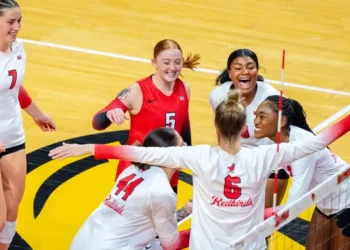In a landmark move for high school athletics in Alabama, the Alabama High School Athletic Association (AHSAA) has announced that it will officially sanction outdoor high school volleyball matches for the first time in its history. The inaugural sanctioned match is slated to take place this October, marking a new chapter for a sport that has long been confined to gymnasiums.
For decades, volleyball has been almost exclusively an indoor sport at the high school level in Alabama and across much of the United States. While beach volleyball has seen a surge in popularity at the collegiate and professional levels — and even became an Olympic sport in 1996 — high schools have largely remained committed to traditional six-on-six indoor volleyball. But with changing trends, growing interest, and the push to innovate student athletic experiences, the AHSAA’s decision is both timely and forward-thinking.
The upcoming match is expected to feature a modified format inspired by beach volleyball but tailored for high school teams that are more accustomed to the indoor game. Organizers say the first match will be played on a specially prepared sand court at a participating school, with temporary infrastructure like seating and scoreboards to accommodate fans.
Why Outdoor Volleyball Now?
There are multiple reasons behind the AHSAA’s decision to embrace outdoor volleyball. One major factor is the growing interest in beach and sand volleyball among youth athletes. Many players already participate in travel and club beach volleyball leagues during the off-season, and colleges increasingly offer scholarships for the sport. Sanctioning outdoor matches at the high school level could help bridge the gap between indoor and beach volleyball, giving student-athletes more opportunities to develop diverse skills and attract college scouts.
Another practical reason is the flexibility outdoor volleyball provides. During the COVID-19 pandemic, schools across the country experimented with outdoor matches to keep students safe through better ventilation and more space. Some schools found the outdoor format refreshing and enjoyable, sparking interest in making it an annual or seasonal tradition.
A New Experience for Players and Fans
The shift outdoors will mean a different kind of challenge for players. Wind, sun, and an unpredictable surface all factor into how the game is played. Athletes will need to adapt their serving, passing, and hitting techniques to suit outdoor conditions, which can be vastly different from the polished hardwood floors of a gymnasium.
Coaches, too, will need to adjust their strategies. Smaller team sizes — often two or four players per side instead of six — are common in outdoor volleyball formats. This means more touches per player and greater emphasis on all-around skills, communication, and stamina.
For spectators, the outdoor setting could transform high school volleyball into a more festival-like atmosphere, complete with music, concessions, and a more casual vibe than the usual bleacher-bound matches inside school gyms.
Building Momentum for the Future
The AHSAA’s first sanctioned outdoor volleyball match is being hailed as a pilot event. If successful, it could pave the way for an entire outdoor volleyball season in the years to come. Schools with the resources may invest in permanent outdoor sand courts, and tournaments could spring up during the fall or spring when the weather is ideal.
Some athletic directors see this as a way to engage more students in volleyball by adding variety and fun to the traditional schedule. Schools in coastal regions or areas with warm climates are especially well-positioned to benefit from the new opportunity.
AHSAA Executive Director Alvin Briggs expressed optimism about the move, noting that “Our goal is always to expand opportunities for student-athletes while promoting the growth of sports across the state. Outdoor volleyball combines the excitement of the indoor game with the energy and atmosphere of an outdoor setting. We think it’s a win-win for schools, athletes, and communities.”
Players and Coaches Ready to Make History
One of the teams preparing for the inaugural match, the Gulf Shores Dolphins, has already been practicing on a sand court near the beach during the offseason. Head Coach Sarah Mason says her players are “thrilled to try something new and showcase their skills in a whole new environment.”
Senior team captain Emma Johnson added, “We’ve grown up watching beach volleyball on TV and now we get to be part of making it a real thing for high schools in Alabama. It’s going to be so much fun.”
As October approaches, excitement is building not just in Alabama but across the region. If the match succeeds, it may inspire other states to follow suit, adding a fresh twist to one of the world’s most beloved sports.
From the beach to the backyards and now to the high school circuit, volleyball’s leap outdoors is another sign that the game’s future is as bright — and as boundless — as the open sk
y under which it will soon be played.











